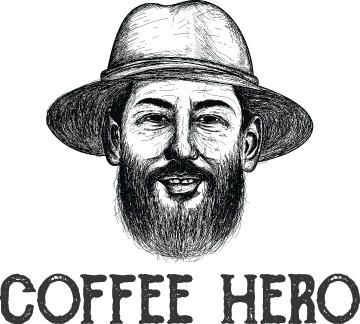
The Ultimate Guide to Cold Brew Coffee Kegs: RTD vs Concentrate, Costs, Taps & Supply in Australia
COLD BREW COFFEE KEGS, RTD VS CONCENTRATE
The Ultimate Guide to Cold Brew Coffee Kegs: RTD vs Concentrate, Costs, Taps & Supply in Australia

Cold brew coffee is no longer just a summer trend. It’s now one of the fastest-growing beverage categories in offices, cafés, coworking spaces, fitness studios, bars, and corporate catering. Businesses from Brisbane to Newcastle are installing coffee taps the same way they once installed water dispensers.
Why? Because cold brew is fresh, energising, convenient, cost-efficient, and honestly, pretty addictive.
But when it comes to supplying cold brew in kegs, most people get stuck on one big question:
Should we use cold brew concentrate or an RTD (“ready-to-drink”) keg?
This guide, built specially for companies, cafés and offices exploring keg supply, will walk you through every important consideration:
✔ The difference between cold brew concentrate vs RTD kegs
✔ Keg types, tap systems, nitrogen vs CO₂, storage, and shelf life
✔ Costs per litre and how to choose the most profitable option
✔ Delivery to locations like Newcastle, Sydney, Melbourne, Brisbane etc.
✔ What to ask a supplier before signing a contract
✔ Who should choose which product and why
Whether you’re an office manager, café owner, or procurement buyer, this article will help you source cold brew with full confidence.
What Exactly Is Cold Brew Coffee?
Cold brew isn’t iced coffee.
Iced coffee is brewed hot, then chilled. That’s why it can taste bitter.
Cold brew is brewed slowly with cool water over 12–24 hours, producing a naturally sweeter, smoother flavour with less acidity and deeper chocolate or caramel notes.
This makes it ideal on tap because:
-
No bitterness from over-extraction
-
Very low acidity = gentler on the stomach
-
No need to add sugar or flavouring
-
Highly consistent, cup after cup
In fact, many offices that switch to cold brew notice that staff drink less milk and sugar because the coffee is smoother by default.
If you’d like to taste a bottled version first, you can try a cold brew starter here:
👉 https://coffeehero.com.au/products/cold-brew-500ml
Freshly Roasted Specialty Coffee Beans used for Cold Brew

Cold Brew Concentrate vs Ready To Drink (RTD) Kegs: What’s the Difference?
Before you choose a supplier, you must decide which keg style fits your business needs. The difference looks simple, but it impacts cost, flavour, equipment, dilution, and even keg pressure.
🥇 RTD Cold Brew Keg (Ready-to-Drink)
-
Brewed and diluted to drinking strength
-
Tap and serve instantly - no measuring
-
More consistent taste, regardless of who serves it
-
Ideal for offices and hospitality environments where staff are not baristas
Best For: Offices, corporate catering, gyms, coworking spaces, bars wanting an espresso-martini base.
Introducing our #1 selling Wholesale Cold Brew
Cold Brew Concentrate Keg
-
Strong extraction, requires dilution
-
Higher yield per keg (cost-efficient if used correctly)
-
Can be used for iced lattes, nitro cold brew, smoothies, protein shakes, cocktails, frappés, etc.
-
Requires a consistent mix ratio (usually 1:2 or 1:3)
Best For: Cafés, restaurants, experienced baristas, venues with multiple menu applications.
Quick Summary Table
| Feature | RTD Keg | Concentrate Keg |
|---|---|---|
| Ready to serve? | Yes | No |
| Requires training? | No | Yes |
| Consistency | Very high | Varies by preparation |
| Cost efficiency | Medium | High |
| Versatility | Low | Very high |
| Best use | Offices | Cafés & venues |
| Common mix ratio | None | 1:2–1:3 |
How Are Cold Brew Kegs Made? (Inside the Brew Process)
Every supplier has a different methodology. The quality of cold brew depends on:
-
Origin of coffee beans
-
Roast profile (medium, medium-dark, espresso style)
-
Grind size and filtration level
-
Steep time & water quality
-
Batch consistency
Single origin beans tend to produce a more nuanced flavour profile, while a blend offers consistency and lower cost for high-volume use.
If you’re sourcing from Australia, look for suppliers using freshly roasted beans, not pre-ground or imported concentrate. Fresh breweries such as Coffee Hero ensure beans are roasted locally before extraction.
To explore bean quality first:
👉 https://coffeehero.com.au/collections/freshly-roasted-coffee-beans

Nitro vs Still Cold Brew Kegs: Which Should You Choose?
⚡ Nitro Cold Brew (Creamy, Velvety)
Nitro cold brew is infused with nitrogen (N₂), creating a cascading, smooth, stout-like pour similar to Guinness. It’s creamier, naturally sweeter, and extremely popular in offices and cafés.
Requires: Nitrogen cylinder + regulator
💧 Still Cold Brew (Simple, Classic)
Still cold brew is served without gas infusion. Crisp, bold, perfect with ice or milk.
Requires: CO₂ cylinder OR no gas (depending on system)
⚠️ Why this matters for keg choice:
-
RTD & Concentrate both work with nitro or still, but RTD is more predictable when nitrogen is used.
-
Concentrate nitrogen systems may require recalibration to avoid overpowering the coffee taste.
Costs: Concentrate vs RTD - Which Is More Profitable?
The cost structure depends on:
✔ your usage frequency
✔ cup size
✔ milk vs black coffee consumption
✔ nitro vs still
Below is a simplified average estimate based on Australian pricing (may vary by supplier):
| Keg Type | Average Yield | Cost Per Cup (200–250ml) |
|---|---|---|
| RTD 20L keg | 70–90 servings | $2.10–$3.10 |
| Concentrate 20L keg (1:3 dilution) | 200–260 servings | $0.85–$1.40 |
Key Insight
Concentrate is cheaper per cup, but RTD offers 100% consistency and no training.
Keg Types & Connection Styles
Before ordering, your supplier must know your tap system.
| Keg Style | Common Connectors |
|---|---|
| Commercial stainless steel | A-Type, D-Type |
| Cornelius (homebrew style) | Ball-lock |
Offices commonly use Cornelius kegs, cafés tend to use A-type or D-type. If unsure, send the supplier a photo of your setup.
Gas Requirements
| Setup | Gas | Result |
|---|---|---|
| Nitro | N₂ | Smooth, creamy |
| Still | CO₂ or none | Bold, classic |
Delivery & Storage (Including Newcastle, Sydney, Melbourne, Brisbane)
Cold brew kegs travel well cold-chain packed and last 6–10 weeks refrigerated. Offices like the one in the Newcastle enquiry above can be serviced via cold freight or scheduled rotations.
Always ask suppliers:
❓ Delivery Questions to Ask
-
Minimum order quantities?
-
Rush orders available?
-
Do they provide keg pickup and returns?
-
Cold-chain guarantee during transport?
Australia Post does not handle kegs. Reputable suppliers use private couriers or direct logistics.
For enquiries or a delivery quote to your suburb:
👉 https://coffeehero.com.au/pages/contact-us
Shelf Life & Food Safety
| Product | Shelf Life (sealed) | After tapping |
|---|---|---|
| RTD keg | 4–10 weeks | 2–4 weeks |
| Concentrate keg | 8–16 weeks | Up to 6 weeks |
Hygiene Tips
-
Flush lines every 1–2 weeks
-
Keep keg refrigerated before tapping
-
Avoid adding sugars or syrups to the keg (breeding risk)
Which Businesses Should Choose Which Keg?
| Business Type | Best Keg |
|---|---|
| Offices | RTD |
| Coworking spaces | RTD |
| Cafés | Concentrate |
| Corporate catering | RTD |
| Bars (cocktails, espresso martinis) | Concentrate |
| Gyms & health studios | Concentrate |
| Restaurants | RTD or Concentrate depending on milk usage |
Sustainability: Cold Brew Kegs vs Bottles
Kegs reduce:
♻ Plastic bottle waste
♻ Transport emissions
♻ Packaging cost
Reusable stainless kegs have a lifespan of 10+ years, making them one of the most environmentally sustainable beverage systems available.
Questions to Ask Your Cold Brew Supplier Before Committing
✔ Quality & Production
-
Do you brew with freshly roasted beans?
-
Single origin or blend?
-
Steep time (minimum 12 hours)?
✔ Logistics
-
Refrigerated supply chain?
-
Turnaround time?
-
Refill cycle?
✔ Equipment Compatibility
-
Keg type (A, D, Cornelius)?
-
Nitro or still setup?
-
Do they provide maintenance or flushing?
You’re welcome to copy & paste this checklist and send it to multiple suppliers.
Why Cold Brew Is Exploding in Australian Workplaces
According to Statista and beverage market data, cold brew sales in Australia have quadrupled in less than four years. Increased workplace coffee consumption and hybrid/office incentives are driving demand. Cold brew taps are becoming standard in tech companies, universities, engineering firms, logistics offices, mining HQs, hospitals, and startups.
Reference:
🌍 https://www.statista.com/topics/8703/coffee-market-in-australia/
Want to Try Cold Brew Before Going to Kegs?
Many businesses begin with bottled cold brew before committing to a keg system. This allows staff to taste flavour profiles before they pick RTD or concentrate.
➡ You can start here with fresh cold brew bottles:
https://coffeehero.com.au/products/cold-brew-500ml
RTD vs Concentrate - Which Is Right for You?
| If you want… | Choose |
|---|---|
| Zero training + instant serving | RTD |
| Lowest cost per cup | Concentrate |
| Most menu flexibility | Concentrate |
| Perfect consistency & scaling | RTD |
| Nitrogen setup for a creamy pour | RTD |
Ultimately, both keg types serve different needs. The real key is choosing a fresh, locally brewed, cold-chain supplier using high-grade beans, not mass-produced concentrate.
If you’d like personalised guidance based on your location, tap system, or staff size, you can contact Coffee Hero’s wholesale team:
👉https://coffeehero.com.au/pages/contact-us
Or explore wholesale cold brew options:
👉 https://coffeehero.com.au/products/wholesale-cold-brew
Interested in More Coffee Knowledge?
Follow our blog for tips, brewing guides, and industry insights:
👉 https://coffeehero.com.au/blogs/news
👉 Coffee Brewing Mistakes - How To Fix Them
👉 Cold Brew Coffee - Everything You Need To Know
☕ Tip: The “Tasting Flight” Method for Offices
Before choosing RTD or concentrate, request samples of both and have staff vote. Make it fun; record feedback. The best tasting product always wins more value than the cheapest option.


